
You can take steps to make living with bunions easier, like wearing sensible footwear, using bunion pads, and undergoing physiotherapy. In more severe cases, bunion surgery is often the most effective treatment option.
A bunion, or hallux valgus, is a common foot condition. It is a painful bony lump that develops on the side of your big toe joint. This bony bump can grow over time as your big toe gradually leans towards your second toe, leading to pain and discomfort.
The exact cause of bunions is not fully understood, but several factors may contribute to their development, including:
Poorly fitting footwear
Inflammatory health conditions, like rheumatoid arthritis or lupus
Abnormal walking patterns
Genetics
Spending long hours on your feet
You can take steps to make living with bunions easier, like wearing sensible footwear, using bunion pads, and undergoing physiotherapy. In more severe cases, bunion surgery is often the most effective treatment option.
Bunions are usually diagnosed by your GP through a physical examination of your foot (or feet). They’ll ask about your symptoms and when you first noticed them, and any other potential contributing factors.
Sometimes, your GP will refer you to a podiatrist or chiropodist for further evaluation. You may have your feet X-rayed to confirm the presence of bunions and to assess the extent of any deformity in the big toe joint.
Bunion surgery – also called bunion correction surgery, bunion corrector surgery, bunion removal surgery or bunionectomy – is a procedure to remove the bunion and relieve pain while improving foot function.
While there are different types of bunion surgery, most involve removing all or part of the bony growth and realigning the big toe joint to restore normal function and reduce discomfort.
The bunion surgery itself is not painful, as the procedure is performed under anaesthesia - usually general, local or spinal anaesthesia.
While some pain and swelling are common in the days following surgery, these symptoms are usually mild and can be managed with painkillers, rest, ice and elevation. Discomfort typically improves over several weeks. Once healed, most patients experience significantly less pain than before the surgery.
There are several techniques used in bunion surgery, including:
Taking away the swollen tissue around your big toe joint
Removing part of your big toe bone to straighten it
Cutting away part or all the bony growth
Realigning one or more forefoot bones to restore a more natural position and correct the abnormal angle of the big toe joint
Permanently fusing the bones of your affected toe joint
Because bunions vary in shape and severity, different types of bunion surgeries are used to correct them. The main types of bunion surgery include:
Osteotomy – The most common bunion surgery. It involves cutting away your bunion and repositioning your bones with metal screws to straighten your big toe and reduce the bump.
Exostectomy – A rare procedure for minor bunions. It involves the surgeon shaving off your bunion without realigning the bone. This is often combined with an osteotomy for optimal results.
Keyhole bunion surgery – This is a minimally invasive bunion surgery where small incisions are made to remove bone and realign the joint. Keyhole bunion surgery usually results in fewer stitches and scarring.
Arthrodesis – Performed for severe bunions. The surgeon removes your bunion and any arthritis in the joint, then fuses the bones with screws to help them heal.
While non-surgical treatments won’t remove your bunions, they can help relieve pain and may prevent the condition from worsening.
Non-surgical bunion treatments include:
Pain Relief: Over-the-counter painkillers or prescription medications
Bunion padding and taping: To alleviate discomfort, keep the foot in a natural position, and reduce pressure on the bunion
Ice therapy: Applying an ice pack to your bunion for up to five minutes at a time
Footwear adjustments: The addition of orthotics such as insoles, and toe spacers, plus wearing toe splints at night, can help. These can be bought at a pharmacy or through your podiatrist
Steroid injections: A combination of local anaesthetic and corticosteroid medication to reduce pain and inflammation temporarily
Footwear choices: Avoid high-heeled, tight, pointy or ill-fitting shoes. Instead, choose shoes that are wide, low-heeled, and made of soft leather
Weight management: Losing excess weight to reduce pressure on your feet
You can read more about how to treat and get rid of bunions here.
Bunion surgery treats severe bunions that are causing significant pain and affecting your quality of life. Surgery is usually recommended if you’ve tried non-surgical bunion treatments first and they’ve not worked well enough for you.
Your doctor or specialist will assess your bunion and discuss treatment recommendations. Typically, you’ll need bunion surgery if your bunion is painful or causing functional problems, like difficulties with walking
Problems that would indicate you may need bunion surgery include:
A big toe that turns toward your smaller toes
A stiff big toe, called Hallux rigidus
Big toe pain that’s interfering with your daily activities
Ongoing swelling and inflammation of your big toe
Problems with walking
The cost of your bunion removal surgery varies based on the severity of your bunion, the specific treatment required, and the Ramsay Health Care hospital you choose.
If you decide to proceed with surgery, we will provide a clear, personalised quote for your treatment.
We offer an all-inclusive Total Care package, which includes a single, one-off payment at a pre-agreed price, covering all aspects of your treatment for complete peace of mind. You can also spread the cost of your treatment with our finance options.
Bunion surgery may also be covered by your medical insurance. We advise you to check directly with your insurance provider and obtain written confirmation before commencing treatment with us.
Before determining which type of bunion surgery you need, your Ramsay Health Care surgeon will consider the severity of your bunion, your general health, activity levels and age, and any medications you take.
An X-ray may be requested to examine the deformity and decide where along the bone to perform surgery. Your surgeon will discuss the details of the operation with you and what to expect.
Bunion surgery can be performed under local, general, or spinal anaesthesia. If you opt for general or spinal anaesthesia, your doctor will advise you when to stop eating and drinking. You should also arrange for someone to drive you home and stay with you for 24 hours after surgery.
To make your recovery easier, consider preparing your home in advance. You may find it difficult to move around initially, especially if using crutches. Rearranging furniture for easy access and moving items within reach will help. If you have stairs, you may want to plan to sleep downstairs for the first few days.
Read more about preparing for bunion corrector surgery here.
Bunion removal surgery usually takes less than an hour, and most patients can go home the same day.
The procedure may vary depending on the type of bunion surgery, but generally, your surgeon will make an incision over your big toe joint. For keyhole surgery, several small incisions are made around the joint.
The surgeon will remove the bunion and realign the bones in your big toe to straighten them. Soft tissue around your big toe may also be repaired, ligaments may be released or tightened, and smaller toes may be straightened. Pins, plates or screws are often used to hold everything in place.
After your bunion operation, you’ll be taken to a recovery room to rest as the anaesthesia wears off.
Your foot will likely be in a bandage which you’ll need to keep dry.
Often, patients are given crutches or a brace to help with walking, and a special post-operative shoe to protect their foot. You’ll receive guidance on how much weight you can place on your foot, as well as how to use the crutches, brace, and post-operative shoe.
Most patients can go home on the same day as the operation. You’ll be discharged when you feel ready, and your surgeon considers it safe.
Depending on the type of anaesthesia you had, you may feel tired or disorientated afterwards. This usually passes within 24 hours. During this time, it’s advised not to drive, operate machinery, drink alcohol, or do any activity that requires focus or alertness.
Bunion surgery recovery times will vary from person to person and depends on the severity of your bunion, the type of bunion surgery you had, your condition, and how quickly you heal.
Throughout your recovery, it’s important to follow your surgeon’s post-operative instructions.
In the first 48 hours following your bunion surgery, you can expect mild to moderate pain. This can usually be managed effectively with painkillers. During the first week after surgery, you’ll focus on rest and recovery, keeping your foot elevated for periods. You may be encouraged to gently move your foot to maintain flexibility.
You’ll continue to focus on recovery, keeping the surgical area dry and clean, elevating your foot, and using ice packs if necessary to reduce swelling. You likely won’t be able to put weight on your foot, but using crutches or a brace to stay mobile will help support your recovery.
During this period, you’ll typically be able to increase your activity levels by gradually putting more weight on your foot and spending more time on your feet.
You should be able to drive again once you’re wearing regular shoes and can safely perform an emergency stop. However, you’ll need to check with your surgeon and car insurance company before getting behind the wheel.
If your job is primarily seated, you may be able to return to work during this time.
You’ll typically return to normal walking and sports activities between six and 12 weeks after bunion surgery. You should be able to return to a more physically demanding job that involves standing and walking.
By this stage, your foot should have fully healed, and you’ll resume your regular activities, including walking, working, sports, and driving. Most patients experience significantly less foot pain and an improved quality of life.
Your surgeon will discuss the risks or complications of bunion surgery with you. While bunion surgery complications are rare and usually easy to treat, they can prolong your recovery.
The risks of bunion surgery can include:
Infection and inflammation of the surgical wound – this can be treated with antibiotics
Nerve damage - causing loss of sensation and numbness in the big toe
Continued pain or stiffness - if there’s a change in your weight distribution you may feel pain under the ball of your foot when standing or walking. You may also experience stiffness in and around your big toe
An abnormal toe position - your big toe may heal outwards, upwards, or be slightly shorter after your operation.
You should see your doctor if you experience any symptoms that are worrying you. The following are potential signs of infection which you’ll need to seek immediate treatment for:
A high temperature
Redness and or warmth around the surgical wound
Pain that worsens and that doesn’t get better when taking painkillers
Pain and/or swelling in your lower leg
Discharge from your surgical wound
While non-surgical treatments can alleviate bunion symptoms, surgery is the only way to permanently remove them.
Bunion surgery straightens your big toe, removes the painful bump, and corrects the underlying issue, providing long-term relief. It also aims to prevent the bunion from reoccurring.
Most patients report improved quality of life after bunion surgery, including reduced pain, easier walking, and the ability to wear shoes that were previously uncomfortable.
Bunion removal also reduces the risk of future foot-related complications associated with bunions, such as bone spurs, bursitis, hammertoes and osteoarthritis.
Whether bunion surgery is right for you depends on how the condition affects your daily life. If you’re considering surgery, the first step is to talk to your GP.
You can expect high-quality, patient-focused care with Ramsay, making us an excellent choice for your private bunion surgery.
At any of our Ramsay Health Care hospitals across the country, you’ll find modern, well-equipped facilities and experienced and compassionate medical professionals who put your needs first.
We offer a range of different types of bunion surgery at our Ramsay hospitals and will tailor our care to your specific circumstances. Our expert podiatrists and orthopaedic surgeons have a special focus on foot health and can recommend and discuss in detail the best bunion treatment for you.
You can rest assured that we’ll take every care to achieve the best results with your bunion removal surgery, reducing your pain and restoring your foot function.
Contact us to find out more about bunion surgery with Ramsay Health Care.
Bunion surgery is not always recommended, usually in cases where your bunion doesn't cause you undue pain or affect your mobility. In these instances, you may be able to manage your bunions with non-surgical treatments, like shoe inserts and bunion pads.
While you can lessen the symptoms of bunions with non-surgical treatments like orthotics, padding, and footwear changes, the only way to permanently remove a bunion is through surgery.
Recovery varies by person, but it typically takes six to 12 weeks for initial healing, with full recovery and a return to normal activities taking around three to six months.
Bunion surgery is generally considered minor to moderate surgery, but it depends on the procedure. Keyhole bunion surgery is a form of minimally invasive bunion surgery, while more severe cases may require reconstructive surgery.

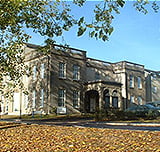
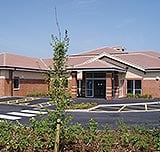
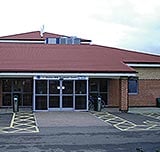

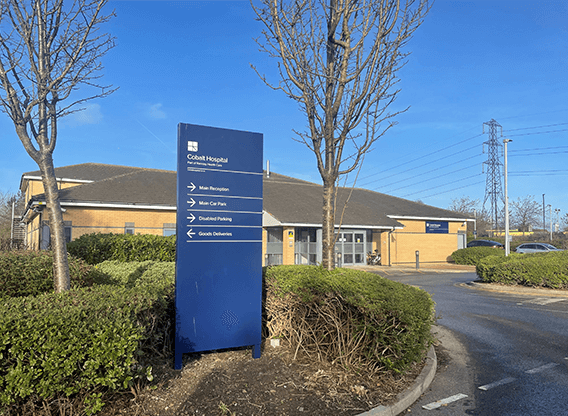
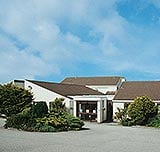

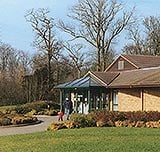
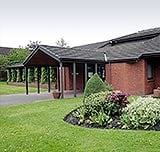
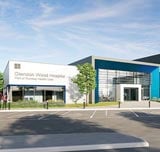
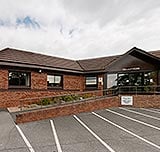

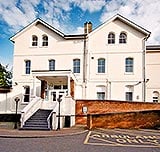
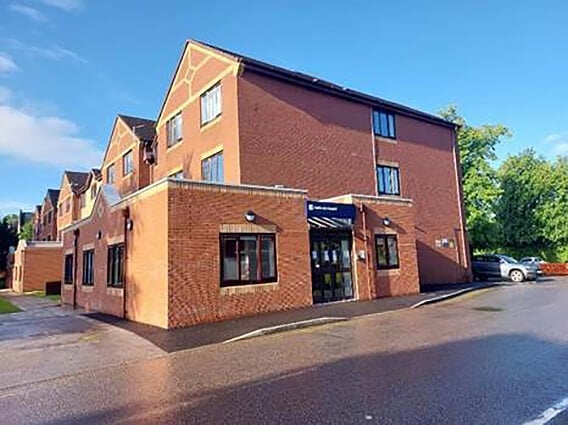
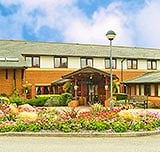
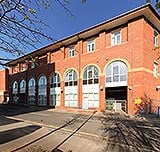
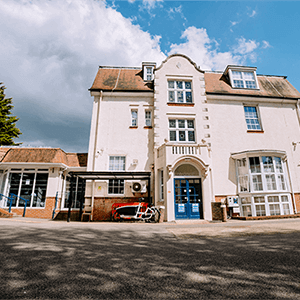

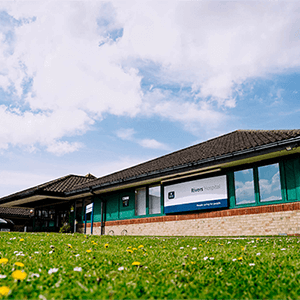

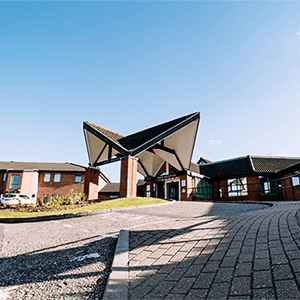
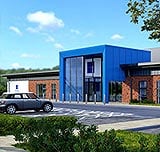

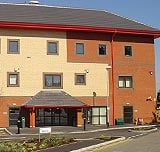


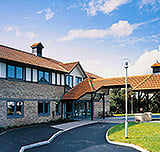
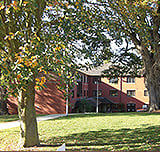
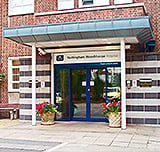
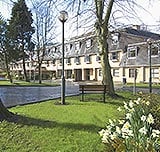
Starting on May 28th, Renacres Hospital staff embarked on an inspiring week-long marathon event to raise funds for Elsie’s Story Charitable Trust. Founded by Elsie’s parents in her memory after the tragic Southport attack in July 2024, Elsie’s Story is our chosen charity for 2025.
Mr James Hahnel, based at The Yorkshire Clinic, Bingley, is at the forefront of robotic-assisted joint replacements. Discover how his precision-led approach is transforming recovery outcomes for patients across Yorkshire.
Following months of hard work from members of our mobile diagnostic team, RDUK, Ramsay's Mobile Diagnostic Unit, is proud to announce its award of the Quality Standard for Imaging (QSI) Quality Mark.
The information, including but not limited to, text, graphics, images and other material, contained on this website is for educational purposes only and not intended to be a substitute for medical advice, diagnosis or treatment. Always seek the advice of your physician or other qualified health care provider with any questions you may have regarding a medical condition or treatment.
No warranty or guarantee is made that the information contained on this website is complete or accurate in every respect. The testimonials, statements, and opinions presented on our website are applicable to the individuals depicted. Results will vary and may not be representative of the experience of others. Prior patient results are only provided as examples of what may be achievable. Individual results will vary and no guarantee is stated or implied by any photo use or any statement on this website.
Ramsay is a trusted provider of plastic or reconstructive surgery treatments as a part of our wrap-around holistic patient care. Our personal, friendly and professional team are here to support you throughout to ensure the best possible care. All procedures we perform are medically justified, and we do not offer treatments that are purely aesthetic / to change your appearance.
Ramsay Health Care UK is not currently recruiting for any roles based outside of England. If you are interested in applying for a role with Ramsay Health Care UK, please note that all available positions are advertised exclusively on our official website: https://www.ramsayhealth.co.uk/careers. Be cautious of individuals or organisations that approach you directly for remotely-based roles. Always verify the authenticity of the job offer and be careful with whom you share your personal information. For more information and advice on employment fraud, please visit: https://www.ramsayhealth.co.uk/careers/recruitment-fraud